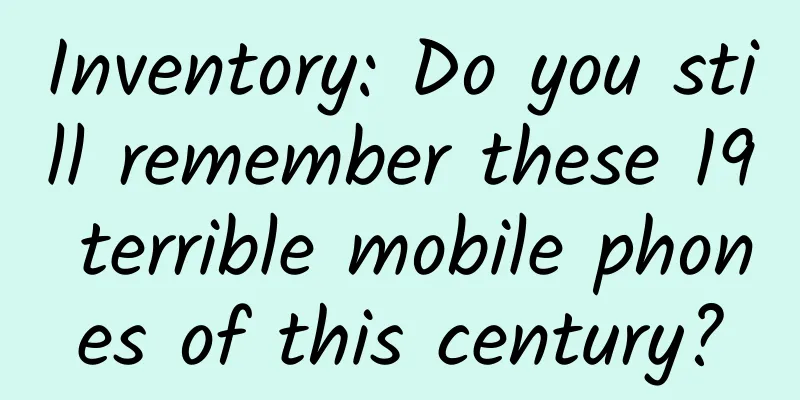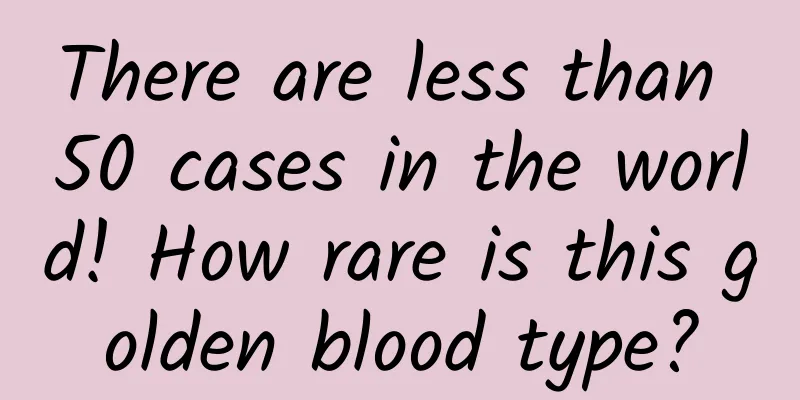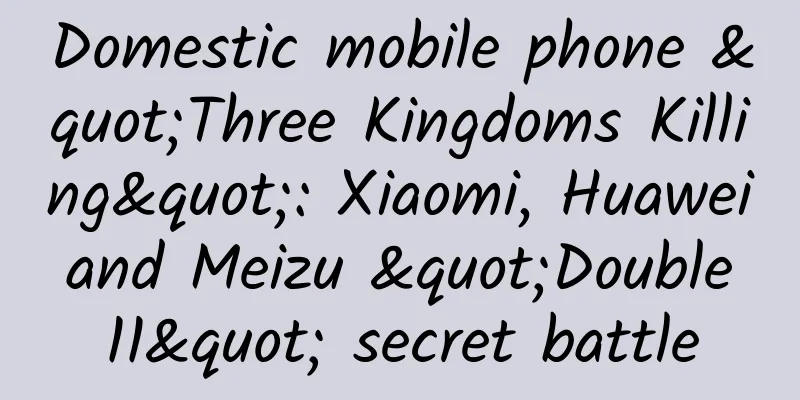Inventory: Do you still remember these 19 terrible mobile phones of this century?

|
Some of these phones you remember, and may have even owned. Others have been forgotten. These days, nearly every phone has these features: a rectangular touchscreen with a ton of features, from voice assistants to GPS navigation, that are industry standard. They're great -- but most of them are pretty similar. Yet the history of bad phones is littered with truly unique models that added new features they didn't need, or omitted features they did need -- or often both. Although such phones are not worth celebrating, they are still worth remembering because they also provide some experience for companies designing new models. Here are our picks for the 19 worst phones released since 2000, along with five that came very close to making our list. Microsoft KIN ONE and KIN 2 (2010) In the spring of 2010, as Microsoft prepared to launch an ambitious new smartphone platform called Windows Phone, it inexplicably launched two phones that weren't based on Windows Phone. In fact, the Kins probably didn't really count as smartphones, since they didn't have an app store. But the company's devices, aimed at the social generation, did include a ton of features designed for hip young people who loved Facebook, Twitter, MySpace, and other social sites. The problem was that they were ugly, sluggish, riddled with troubling design decisions (social posts only appeared periodically, not when you created them), and generally uninspiring. The result: A Verizon exclusive, the Kin lasted just two months on the market before the carrier terminated it, making it one of a handful of legendary flops like the HP TouchPad as one of the shortest-lived products of all time. BlackBerry Storm (2008) When Steve Jobs unveiled the original iPhone in January 2007, Research in Motion, the maker of the BlackBerry and a smartphone giant at the time, didn’t take Apple’s new device seriously. In late 2008, however, RIM unveiled the BlackBerry Storm, which grudgingly put an iPhone-like finish on the classic BlackBerry experience. The Storm ditched the iconic BlackBerry physical keyboard in favor of a touchscreen. When you pressed on it, the entire display clicked, as if it were one giant key. New York Times critic David Pogue likened the experience to using a manual typewriter, and he found the phone so buggy that he dubbed it the BlackBerry Dud. The upshot: RIM had been building smartphones for years, but the Storm showed it had no clue what to expect in the iPhone era — and later products, like the Playbook tablet, only made things worse. Motorola ROKR E1 (2005) By 2005, consumers, who had made Apple's iPod into a phenomenon, were salivating over a device that was both a phone and an iTunes-compatible music player. That September, Steve Jobs announced the Rokr at an Apple event. But the phone didn't have the same functionality as the iPod. It held only a measly 100 songs, which you could only download from your computer over an outdated, woefully slow USB 1.1 connection. The Rokr was another product announced at Apple's event, released alongside Apple's impressive iPod Nano. "Screw the Nano," Motorola CEO Ed Zander said in an interview. "Who's really going to listen to 1,000 songs?" Outcome: After the E1 collaboration, Motorola and Apple parted ways, designing their own music phones. Moto also released Rokr models that synced with RealNetworks' RealPlayer or Microsoft's Windows Media Player instead of iTunes. 4. Nokia N-GAGE (2003) This attempt to challenge Nintendo's Game Boy with a hybrid Symbian-based phone and gaming system was an act of hubris at a time when Nokia was going strong. The N-Gage cost three times as much as Nintendo's handheld, and it had an awkward button layout and a tall aspect ratio that made games like Sonic N less than enjoyable to play. It didn't help that the N-Gage launched with just six games, while the Game Boy Advance was backwards compatible with Nintendo's entire Game Boy catalog. Perhaps worst of all, the speakers and earphones were mounted on the top edge of the N-Gage, which made it look like people were talking through a tortilla. The result: In 2004, Nokia released the N-Gage QD, which was smaller and without the awkward side-mounted earpiece, but still fell far short of Nokia's sales targets. Nokia tried to revive the N-Gage mobile gaming service brand in 2007, but the effort only lasted a few years. The possible killer might be Apple's iPhone, which finally provided the kind of gaming phone people wanted. 5. Samsung Galaxy Note 7 (2016) Unlike the other phones on this list, the Samsung Galaxy Note 7 won high praise from critics before its release in August. But it was also the only phone on this list to be banned from airplanes by the Federal Aviation Administration due to a defective battery that could smolder, catch fire, or explode. Samsung's initial recall failed to fix the problem, with a replacement Note 7 even catching fire on a plane, and the company abandoned the phone in October, halting production forever. To prevent die-hard Note 7 fans from ignoring the recall, Samsung issued a software update to their phones. The upshot: Samsung began selling a "Fan Edition" of the Galaxy Note 7 (with a smaller, safer battery) in mid-2017, but only in South Korea. Despite nearly all Galaxy Note 8 reviews mentioning its predecessor's battery troubles, the new phone is apparently selling well. 6. PALM TREO 700W (2006) Bill Gates' announcement of a Microsoft-Apple partnership via conference call during Apple's 1997 Macworld Expo keynote was met with boos from the audience. But for fans of Palm Computing, the Palm Pilot and Treo Gates' live appearance at a 2005 Palm press event in San Francisco was even more frustrating. The Microsoft CEO was there to help announce that Palm would release a Treo smartphone running the Windows Mobile operating system, a marriage of the two platforms designed to deliver a phone that would appeal to corporate buyers. Given the two companies' years of fierce competition and the status of Palm OS as the Treo's key feature, it felt like an abject capitulation on Palm's part. When the phone hit the market in early 2006, it lacked most of the software features that made other Treos delightful, and it also lacked a soul. Result: The Treo 700w was followed by a slightly improved version, the 700wx, in late 2006. But the original iPhone arrived in January 2007, instantly turning all Windows Mobile devices into dinosaurs. Palm went on to bet big on an entirely new phone called the Pre, only to be swallowed up by HP and then destroyed. 7. BlackBerry Z10 (2013) The Z10 is the first phone to use BlackBerry 10, BlackBerry's belated (and often-delayed) attempt to modernize its phones for the touchscreen age. While the hardware is adequate, BlackBerry 10's app shortage is an instant death sentence, and the OS is riddled with minor annoyances. There's little reason for all but the most devoted BlackBerry fans to consider the Z10, and even those who are are advised to wait until the keyboard-equipped Q10 comes out later this year. The result: BlackBerry put on a brave face, however, and kept shipping BlackBerry 10 on new phones until 2015, when the company finally gave up and started making Android phones instead. 8. ZTE OPEN (2013) If there's one tech company you instinctively want to support, it's Mozilla, the nonprofit's goal with Firefox OS is to provide an operating system for super-low-cost devices in emerging markets, where even cheap Android phones might not be available. But compared with slightly more expensive phones, the $80 ZTE Open is slow, unresponsive, and far worse at making calls, taking photos, and other basic tasks. Firefox OS is supposed to be streamlined and simple, but it feels downright rudimentary. The result: As cheaper Android phones dropped below $100, Firefox OS lost much of its original reason for existence. The platform never caught on, and Mozilla officially killed it in 2016. 9. Motorola Aura R1 (2009) Ten years ago, the two hottest applications for wireless phones were taking pictures and surfing the web. And, photos and web pages were rectangular. But Motorola's Aura R1 was a $2,000 point-and-shoot phone with a round display that was simply not good at showing anything with corners. Like Vertu, Moto focused on making a phone that felt like a beautifully handcrafted watch; the Aura even had a window that let you see the gears spinning when you turned it on. It was cool, but it was a waste of Motorola's time because the iPhone was busy changing the phone market forever. The result: Companies like Motorola saw luxury phones as a market all their own, priced out of reach for the average person. In 2010, Apple's iPhone 4 made beautiful industrial design and luxurious materials accessible to more people, a move that rippled through the industry and made phones like the Aura seem even less meaningful. 10. AESIR AE+Y (2011) Superstar designer Yves Behar created this phone for Denmark's Aesir. It's as dumb as the dumbest low-end burner phones, with no internet access and no apps. But the company lapped up the lily with high-end features like a ceramic casing and discrete buttons. Even the metal screws are an upgrade from the plastic standard. God help you if you lose the phone in a taxi: It sold for $8,100, or $60,000 for the 18-karat gold version. Result: Aesir's founder said he hopes AE+Y will be as influential in 10 years as it was when it was first launched. However, it seems that no one is using it now. 11. VERTU CONSTELLATION QUEST BLUE (2012) Vertu was an offshoot of Nokia, the brainchild of a prolific Nokia designer who came up with the idea for an ultra-luxury phone division in 1997. The brand didn't launch a phone until 2002, but when it did, they were made of precious materials, filled with jewels, and priced at a whopping $19,450. Vertu was all about showmanship, not technology: The Constellation Quest Blue, which came out nearly five years after the first iPhone, ran the old-school Symbian operating system and had no touchscreen. The upshot: Vertu (which eventually went bankrupt but resurfaced last year) was founded to answer the question, "Why shouldn't a cell phone be as luxurious as a high-end watch?" The answer: Because a cell phone isn't a long-term investment, let alone an heirloom! — a question that seems to have occurred to neither the company's founders nor its customers. 12. HTC EVO 3D (2011) The EVO 3D's signature features included a glasses-free 3D display and dual cameras for taking 3D photos, but the novelty of those new features quickly wore off, leaving users with a middling camera, poor battery life, and a lack of the handy kickstand of HTC's EVO 4G. Result: HTC never made another 3D phone, but a few years later the HTC One M8 had an excellent dual-camera setup. 13. HTC SURROUND (2010) Given the crude form factor of Windows Phone 7 at launch, Microsoft really needed some standout phones to make its new mobile OS famous. The HTC Surround didn't fit the bill, with a slider speaker that increased volume but did little to improve audio quality. Combined with a shortage of apps and the lack of features like copy and paste on the software end, the Surround helped ensure that Windows Phone 7 would lag even further behind than it already was. The upshot: Despite its troubles, HTC continued to release Windows Phones in 2014, including better phones like the colorful HTC 8X. But the Windows Phone platform could never catch up to iOS and Android, and Microsoft effectively stopped work on it in 2017. 14. KYOCERA ECHO (2011) In an effort to stand out in a crowded field of Android phones, the Kyocera Echo has a secondary screen that folds outward on a hinge, letting users run two apps at once, type on one screen without covering the other, and expand separate apps to cover both screens. The technology isn't ready yet, though, as users ultimately face bulky hardware, short battery life, and often poorly optimized software. Being a Sprint exclusive probably didn't help. The result: The dual-screen phone concept was shelved until late 2017, when ZTE released the Axon M as an AT&T exclusive. It's a much better device than the Echo, but it suffers from many of the same basic problems. Maybe someday, a phone with a foldable display will fare better. 15. RED HYDROGEN ONE (2018) While Red is known for its large-format, high-resolution professional cameras, the Hydrogen One is focused on 3D, with a glasses-free holographic display and a dual-lens camera that can take 3D photos. Like HTC's Evo 3D seven years ago, these abandoned features seem to compromise everything else, with reviewers slamming the phone for its dim display, bulky construction, and poor 2D camera performance. Meanwhile, Red's long-promised add-on modules have yet to materialize and have even disappeared from the company's promotional materials. The upshot: The Hydrogen One was just announced late last year, so its fate is still undetermined, but the fact that it only got a footnote on Red's main website doesn't bode well. 16. HTC FIRST (2013) Mark Zuckerberg has long seemed eager for iOS and Android to gain traction before he created his own competitor: "One of my great regrets is that Facebook didn't get a big opportunity to shape the mobile operating system ecosystem," he told Fast Company in 2015. It was no surprise, then, that his company launched Facebook Home, an alternative home and lock screen for Android that emphasized friend activity rather than apps. HTC's First was a smartphone that came with it pre-installed. The idea was interesting, but it made launching apps a hassle and wasn't as useful as properly loading Facebook. Meanwhile, HTC's hardware also had a poor camera, an unfortunate choice for a phone whose main selling point was sharing photos. Outcome: A source told BGR's Zach Epstein that the HTC First sold only 15,000 units. Carrier partner AT&T immediately stopped production of the phone, selling off stock for 99 cents on contract. While a Facebook phone might not have been appealing in 2013, the concept seems scary now. 17. AMAZON FIRE PHONE (2014) Rumors of an Amazon smartphone began to emerge in 2011, fueling speculation that overpriced hardware and simple software would be a real threat to Google's Android ecosystem. The final product wasn't actually any cheaper than other flagship phones, but it had far fewer apps, including Google's, and unrefined software. The Fire phone's unique features, including a face-tracking camera for perspective-based graphical effects and buttons for identifying things in the real world, weren't enough to move a pointer. The result: After realizing the phone was a flop, Amazon quickly cut prices and cleared out inventory, taking a $170 million write-off in the process. CEO Jeff Bezos was deeply involved in the development of the Fire phone, but he seems less hands-on with more recent hits like the Echo. 18. TOSHIBA G450 (2008) This compact phone/MP3 player has odd design elements, like a number pad that's split into two circles. It also lacks basic features like Bluetooth and a camera. Just reading CNet's review ("Each button performs a different function, depending on which part of the menu system you're in at any given time") is enough to make you cringe. The upshot: Although the G450 was released after the iPhone, it's a dull product compared with the pre-iPhone era, when phone makers were eager to cram multiple features into a single device, only to find that its features weren't great at all. 19. Motorola Flipout (2010) Back in 2010, Motorola didn't believe that all smartphones should be rectangular. So the company released the FlipOut, a square phone with a screen that swung outward to reveal a physical keyboard. In a way, it was like a foldable BlackBerry, but many areas of smartphone usage had moved away from physical keys. The Flipout's 2.8-inch screen was too small for Android to run, and Motorola's MotoBlur interface didn't make it any more appealing. The upshot: Although Motorola subsequently released a few phones with physical keyboards, it never made a smartphone with a screen as small as the FlipOut. And, for the most part, neither did anyone else. other Although not on the list, the following five phones are also terrible: LG 1010 (2002): The page for this innocuous-looking Sprint flip phone on the website Phone Scoop is filled with comments from phone salespeople who report that a staggering 90 percent of the phones lose signal and never regain it, turning the phone into a brick. Bang & Olufsen Serene (2005): B&O partnered with Samsung to create this $1,275 phone, which has a circular dial pad on the top half, a screen on the bottom, and a camera on the side. (You can flip it over to put the screen on the front, if you want.) Nokia 7280 (2005): The tubular "lipstick" Nokia impressed critics with its bold design, but it had no dial pad. Instead, you could enter numbers slowly and monotonously via an iPod-like scroll wheel. Pantech Jest (2010): For years, phone makers and wireless companies have been giving new phones names that are both evocative and universal. The Jest is the weirdest name of them all, but it's not bad for the phone itself, which is a square-shaped oddity with a tiny slide-out keyboard. HTC Rhyme (2011): Aimed at women, the signature feature of this purple Rhyme was a "charm" accessory that would blink if you received a call. In theory, this was helpful if the phone was tucked away in a purse, but the charm took up the headphone jack and was difficult to attach to a bag, and the blink was too blurry to be visible in any setting. |
<<: Deep Strike | Why QQ is obsessed with young people
>>: Facebook: The next WeChat?
Recommend
What is the difference between cherries and cherry fruits, which differ in price by 5 times?
Every year when the Spring Festival is approachin...
Solve Logic Puzzles with Functional Programming - Swift Version
This translated article uses two methods to solve...
iOS 9 fonts and more
[[149610]] On September 9, 2015, Apple released a...
Ten years of hard work? The first manned flight of the Starliner spacecraft is delayed again
Boeing's Starliner spacecraft was originally ...
Mobile phone supply chain crisis survey: low-end price war is an invisible killer
Recently, Shenzhen Fuchang Electronics, a first-t...
How to buy the Kuaishou popularity agreement, or where to buy popularity?
Professional Douyin and Kuaishou likes-boosting p...
How to train a new media operator?
A while ago, I saw a topic on Maimai called "...
Qingyang Mini Program Investment Company, how much does the Flower Mini Program cost?
How much is the investment price in Qingyang Flow...
The former product operations director of Maopu.com talks about ten insights on new media operations
I should be considered as one of the first new me...
Apple Watch sales materials exposed: Apple is very confident about it
Apple believes that "many people have alread...
Do you want to be on the trending list? Read this before deciding
If a product with good ASO is like a famous celeb...
Apple applies for patent for ultrasonic under-screen fingerprint recognition, which is accurate enough to replace Touch ID
[[201617]] According to AppleInsider on August 29...
up to date! Information flow platform traffic ranking! What is the ranking of the platform you promote?
Do you remember how much advertising cost in Sept...
[Moving bricks for profit] Mengtu earns 100,000 yuan a year in the first phase of the basic course + advanced course of the brick-moving team
[Moving bricks for profit] Mengtu earns 100,000 y...
"Douyin Commercial IP Core Practice Course" takes you to play with algorithms, traffic, content, architecture, and monetization
"Douyin Commercial IP Core Practice Course&q...









